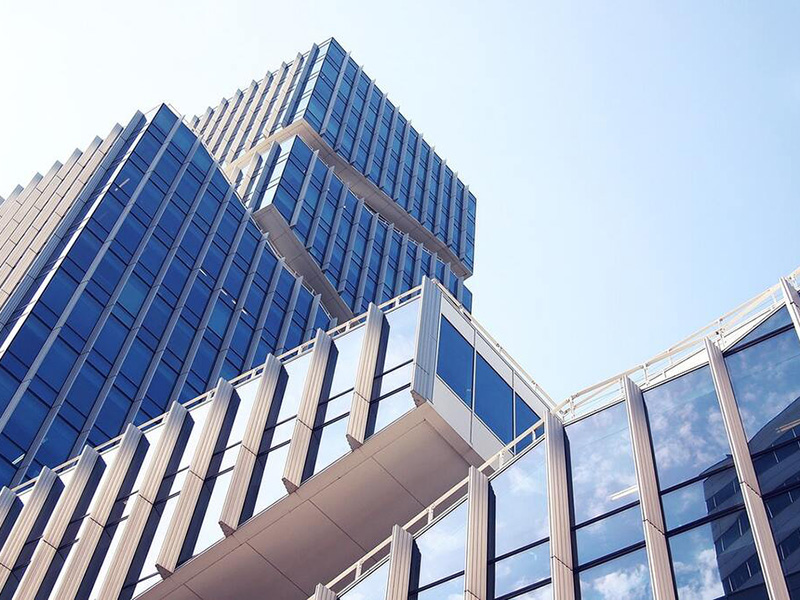Smart Technology for Smart Homes
Ar Apurva Bose Dutta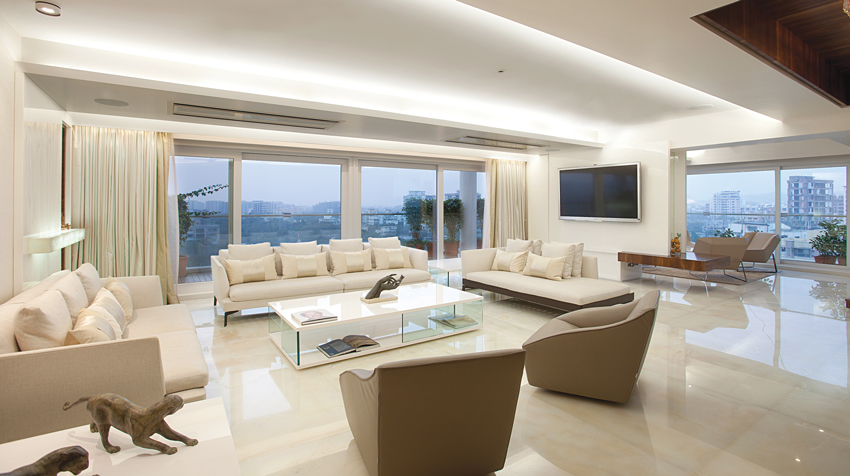 |
| Duplex Apartment designed by ZZ Architects - a new age smart home with lighting, security, entertainment and all other services integrated on a finger touch. Picture courtesy : ZZ Architects |
Technology today has invaded the most intimate spaces of our existence - our homes. Smart Homes today enable the quintessential electronics and appliances to communicate with each other through smart technology. There seems almost a networking existent within these equipments, similar to the networking existing within the family members. In an age that demands ample security and energy efficiency, these gadgets have definitely made life easier and hassle-free, rendering the users with some free and relaxed time for themselves. Add to it, they have successfully been able to ward off some of the stress in today's globalised times - imagine the smile that lights up your face each time you enter your home to hear your favourite song playing. Life has definitely changed, thanks to the onset of technology in homes. Disadvantages though include balancing the complexity of the systems, the older technologies getting redundant with time and hacking concerns. Cities like Mumbai, Delhi, Bengaluru, Pune, Hyderabad, Kolkata, and Chennai validate the prominence and the growing affinity for smart homes in India.
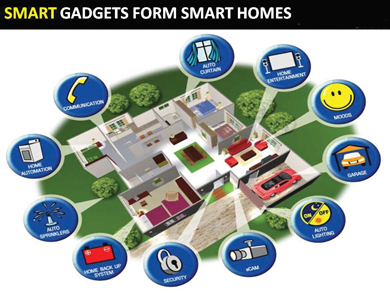 |
| (Picture courtesy - Prem Nath and Associates) |
Smart Technology
One can see the implementations of such technology in applications pertaining to security, entertainment, shading, lighting and HVAC. Security concerns are taken care of by sensors (intruder and glass break detectors, smoke, gas and water leakage detectors), surveillance cameras, key less entry, panic buttons for the elderly, and a central control console with touch screen technology. Biometrics enable elevators to be programmed to recognise the owners and update them on visitors (during their absence) at that level.Self-adjusting lighting and HVAC installations, central hybrid air conditioning systems (replacing massive units of AC), automated shading devices that drop when the sun hits them, irrigation systems interfaced with the central control system in the house to conserve water, and integrated music systems linked to a multi channel amplifier have redefined our perfunctory activities. Smart homes also give us conveniences like TV raceways, home theatres, magic mirrors with television screens within them and cell phones converting into a landline within the home premises (taking care of mobile connectivity issues).
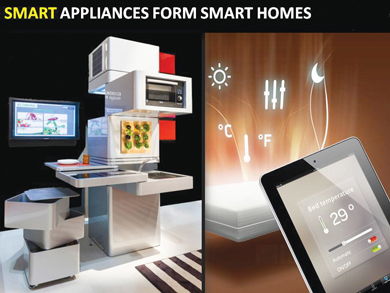 |
| (Picture courtesy - Prem Nath and Associates) |
Kitchens and bathrooms have also been revolutionized by such incredible technology. An internet refrigerator today enables communication through the internet/cell phone, downloads recipes and displays on its LCD screens and alerts the consumer about the expiry of the food kept inside. A microwave can be remote controlled by the user and can cook almost around 4,000 products. A motorized lid covering the hob and sink area can transform the kitchen into an interior space living room while with a single switch a simple 4-door wall cabinet can get transformed into a fully working kitchen with the cabinets moving respectively. The bathrooms have also turned into technology driven areas - showers storing individual profiles for each user, flushes having self-cleaning capabilities, chromatherapy soaking tubs which include water agitation for massaging and aromatherapy for relieving stress through scents, Radiant heating similar to an electric blanket beneath the bathroom tiles, infra-red controls for WC's, urinals and taps, Perfumed or glow-in-the-dark toilet seat covers, waterless urinals, electronic flushing operations and water economising flushing systems are also available.
Cost Deterrent!
Deliberations exist on the cost factor of such homes where the cost (which includes that of components, equipmens, furniture and custom installation, electricity to run the control systems, maintenance costs for the control and networking systems, upgradation of the systems) can be a deterrent for the majority. Architect Girish Dariyav Karnawat known for his sustainable designs likes to question the cost at which this technology comes and believes that the smartest home is a home that can achieve climate control and its efficient use of energy by using common wisdom, age old methods and common sense. "Affordability in Indian context is the deciding factor for such technology. If one can afford it and then use it, then it indeed deserves to be named as smart technology. If it becomes a privilege only few rich can afford then I would call it a luxury house technology or a five star technology," he admits.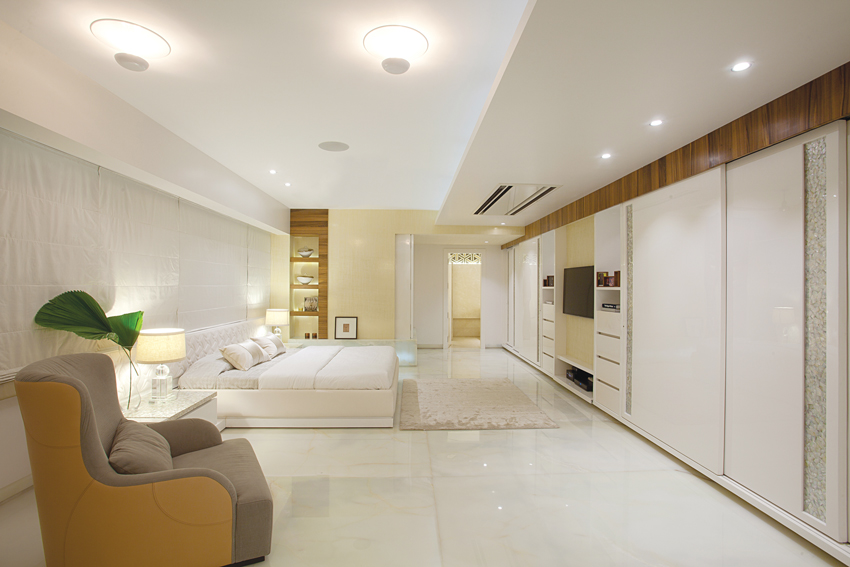 |
| Picture courtesy : ZZ Architects |
The Future
Mumbai based Architect Krupa Zubin known for her effervescent and practical designs feels that smart homes will combine sustainable living with pre-programmed automation controls in the future. "On smart networking one will be able to completely access control over home gadgets and electronic data. Using solar power at the touch of a button, recharging electronics, operating curtains and other associated systems at appropriate times while away, will help save energy. Operations like Siri would register end-user with voice recognition. Physical presence and usage of stored energy are something we will see in the future," she adds.Today, one witnesses robots creeping into our private spaces handling many household chores. To expect the unexpected in the future would then be the safest bet!










